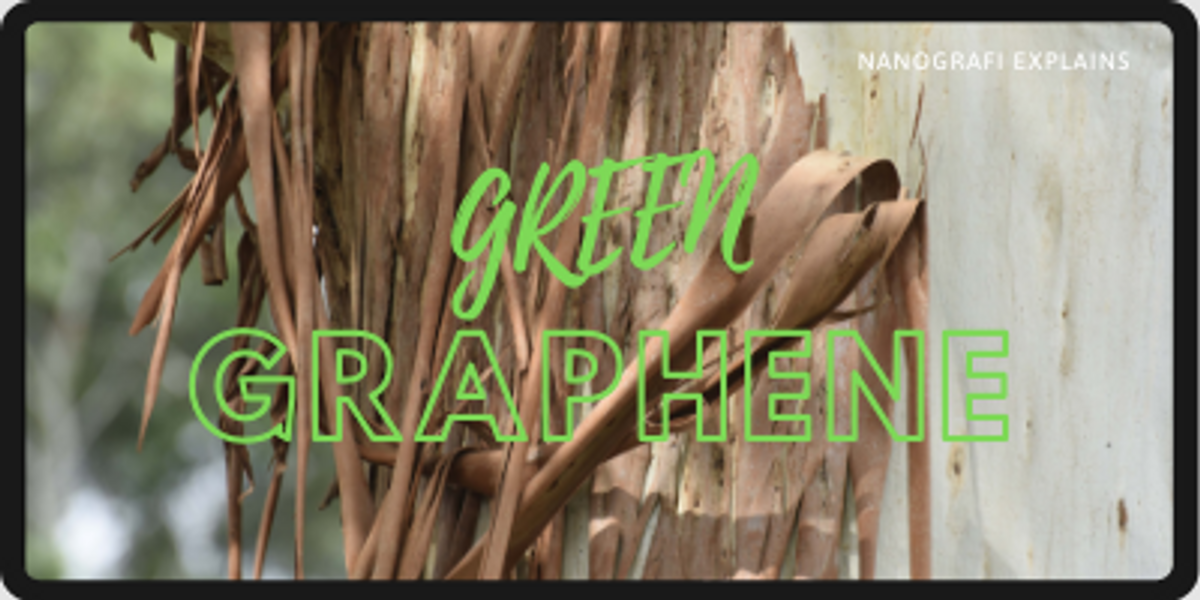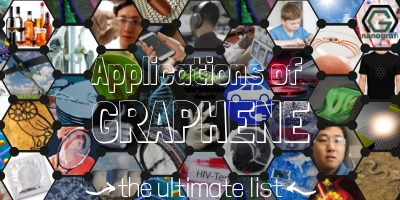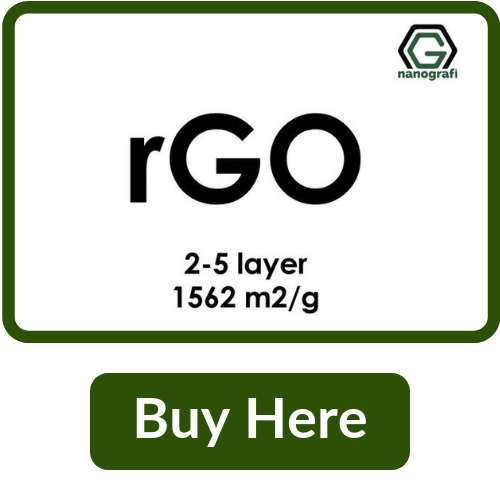What is Green Graphene?
In recent years, the sustainable and eco-friendly synthesis of high quality graphene is one of the most popular topics in the fields of science and engineering. Although the graphene oxide (GO) chemical reduction method is widely used to synthesize graphene, this method mostly includes highly hazardous reducing agents that are dangerous to both humans and the environment. In short, green graphene expression is the production methods of graphene with recyclable materials, which will cause the least damage to the environment.
Graphene is a monolayer two-dimensional (2D) sp2 -hybridized carbon network that has attracted enormous interest due to a number of remarkable properties. These include high elasticity (Young's modulus ~1.0 TPa), good optical transparency (>97.7%), high thermal conductivity (~5000 W.m-1.K-1 ), high specific surface area (~2630 m2 g-1 ) and remarkable charge transport properties (~200 000 cm2 V-1 s -1 ). So far, various methods have been applied for the synthesis of graphene such as chemical vapor deposition/plasma enhanced chemical vapor deposition (CVD/PECVD), epitaxial growth, electric arc discharge, mechanical or ultrasonic exfoliation, chemical intercalation of graphite and solvothermal or chemical reduction of graphene oxide for different application areas, i.e., supercapacitors, biosensors, nanoelectronics, ultra-sensors, composites, Li-ion batteries, photocatalysis and fuel cells. In these synthesis processes, the chemical reduction of graphene oxide has gained big importance because it ensures field for the production of graphene at a low cost in bulk quantities. However, toxic or explosive chemicals including sodium borohydride, hydrazine hydrate, and dimethyl hydrazine are mostly used for this aim, causing to a substantial environmental and health issues. Moreover, the use of excess amounts of reducing agents causes to the presence of undesirable toxic contamination in the RGO, which can restrict its applications, especially in bio-related areas. Hence, there is a demand for eco-friendly and sustainable alternative techniques for the graphene synthesis from GO without using hazardous reagents or expensive instruments.
Diverse eco-friendly reducing agents, including bio-related materials and non-hazardous chemicals, have been studied broadly. In addition to the solution based chemical reduction of GO, several alternative green ways for the reduction of GO have also been improved newly. Such alternative green methods include photo, hydrothermal, microwave-assisted, electrochemical and mechanochemical reduction methods. Though severe oxidation processes involving strong acids are still unavoidable during the preparation of GO, these green approaches are rather significant for the synthesis of graphene.
Read More About Graphene
Green Synthesis of Graphene Using Bio-Related Materials As Reducing Agents
Many studies on the reduction of graphene oxide have used different biomaterials as reducing agents. One of these is ascorbic acid, also known as vitamin C. Ascorbic acid (AA) which has mild reducing capabilities and is non-toxic, provides eco-friendly process for the reduction of GO. Simple stirring of an aqueous GO dispersion with AA results in the efficient restoration of its electronic structure by substantial removal of oxygenated functional groups such as hydroxyl, carbonyl, and epoxy groups. Furthermore, the resultant RGO suspension is rather stable in aqueous solutions for several days without any recognizable precipitation. It is thought that AA plays dual roles as a reducing agent and as a stabilizer during the reduction of GO.
Interestingly, different amino acids and their derivatives including tyrosine, L-lysine, L-cysteine, and glutathione have been properly investigated for use as green and non-toxic reducing agents for the reduction of GO. The facile reduction of GO by using glutathione, which is the main endogenous antioxidant in living cells. It is known that the thiol group in the reduced form of glutathione (GSH) is able to provide a reducing equivalent (e-) to oxygen-containing molecules. Hence, the effective reduction of GO through the removal of various oxygenated functional groups can be achieved by simply stirring GO with GSH at elevated temperatures. The formed black RGO shows superior dispersibility in aqueous media. In addition to amino acid derivatives some bio-related materials such as sugars, proteins, chitosans, and bacteria have been used for the synthesis of graphene. It has demonstrated that a green and facile approach for producing RGO based on reducing sugars (i.e., glucose, fructose, sucrose) using exfoliated GO. In addition, multiple biomaterials from plants such as tea, eucalyptus bark extract, tannin, carrot root, and phytoextracts show great potential as environmentally friendly reducing agents for GO. The use of such materials can offer advantages including cost-effectiveness for the mass production of graphene. It was investigated that the green synthesis of soluble graphene (TPG) via the reduction of GO by using green tea and eucalyptus bark extract as the reducing agents. It was confirmed that the polyphenols (TPs) present in green tea and eucalyptus bark solutions, which have been broadly used as antioxidants in foods and drugs, are responsible for the reduction of GO. The resultant TPG shows good dispersibility in most polar organic solvents and superior physical properties in chitosan-based biocomposite applications.
Green Synthesis Of Graphene Using Non-Toxic Chemicals As Reducing Agents
In addition to bio-related materials, some non-toxic chemicals such as polyelectrolytes, urea, formamidinesulfinic acid, and ionic liquids have been benefited recently as green reducing agents for the reduction of GO. In a reported study, for producing water dispersible graphene by using an ordinary polyelectrolyte, poly (diallyldimethylammonium chloride or PDDA). In this study, PDDA also played dual roles as a reducing agent and stabilizer just like ascorbic acid. Simple stirring of the mixture of exfoliated GO and PDDA in an aqueous medium successfully yielded water-soluble RGO. Also in a reported another study, the development of a green process for the reduction of GO has been developed by using urea as an environmentally friendly reducing agent. Simple stirring of a mixture of urea and GO in an aqueous solution at an elevated temperature formed high quality RGO. Remarkable improvement in the electrical conductivity of RGO was accomplished, due to the efficient restoration of the conjugated graphitic structures. Additionally, superior gravimetric and volumetric capacitances were achieved from the RGO based electrodes at a current density of 0.5 A g-1, with good stability up to 1200 cycles. Based on these results, the RGO based electrodes outperformed most of the graphene-based electrodes prepared by using reducing agents such as hydrazine or NaBH4. Recently, a green method for the reduction of GO using K2CO3 as a reusable reduction agent was improved. Due to facile two-step reduction reactions induced by alkaline K2CO3, including an in situ generated ionic oxygen attack on the oxidized carbon atoms in GO, the efficient restoration of graphitic structures took place.
Alternative Green Ways for The Reduction Of GO
Though solution-based reduction methods for GO by using ecofriendly reducing agents have been broadly studied for the large-scale green synthesis of graphene, they continue to have important obstacles such as the inclusion of physical and chemical contaminants. Excess amounts of reducing agents physically stick to, or chemically react with the resultant RGO, which can change the actual properties of graphene. Hence, the improvement of alternative reductant-free green ways for the reduction of GO is very desirable. In a reported study, a simple UV-induced process was introduced for the photoreduction of GO in an aqueous medium. In this approach, hydrated electrons produced by the homolysis of water molecules excited by UV irradiation can act as reducing agents for GO. The disadvantage of this study is that it requires a long reaction time for the complete removal of various oxygenated groups in the GO, owing to the low yield of hydrated electrons under UV irradiation.
Besides photoreduction, electrochemical methods can also be considered a promising strategy for the green synthesis of graphene. The electrochemical reduction of a GO dispersion was conducted using a typical three-electrode system. Graphite, platinum, and saturated calomel electrode (SCE) were used as the working, counter, and reference electrodes, respectively. GO was reduced by applying high negative potentials, which were required to overcome the energy barriers for the reduction of oxygenated functionalities such as hydroxyl, epoxy, and carboxylic acid groups present in GO. The results obtained from this study showed that the reduction of GO by using the electrochemical method occurs quickly and irreversibly. Another study, a hydrothermal method has been reported a for the green reduction of GO. In this technique, supercritical water (SC-H2O) acted as a green reducing agent under hydrothermal conditions, because cleavage of the oxygenated functional groups in GO was sufficiently promoted by superheated H2O. As a result of good structural restoration of GO, unique tunable optical transmittance and limiting properties were demonstrated for the hydrothermally reduced RGO. Recently, an eco-friendly solid-state reduction method has been developed for GO, by which the undesirable incorporation of heteroatoms or contaminants that often occurs in solution-based reduction processes, could be decreased. Efficient reduction of GO was achieved by simple ball-milling of GO in the presence of H2 gas, using a planetary ball-mill machine. As expected, formed RGO through ball-milling, showed good structural restoration of the graphite structures without any heteroatoms or contaminants. Therefore, the solid-state mechanochemical reduction of GO used in this study can be a promising green synthesis method for low-cost, scalable production of RGO for various applications.
Conclusion
Recent interest in the graphene material, has led researchers to seek out different and more environmentally friendly methods of production. Graphene can be synthesized by the solution-based reduction of GO using biorelated materials and non-toxic chemicals such as green reducing agents. Generally, these non-toxic materials can play dual roles as reducing agents and stabilizers during the reactions. The formed RGOs not only exhibit good structural restoration of the graphitic structures, but also show good dispersibility in different solutions. Graphene can also be prepared in an ecofriendly way by reducing GO by using change reductant-free pathways such as photochemical, electrochemical, hydrothermal and mechanochemical reduction processes. With these techniques, the incorporation of heteroatoms and contaminants that greatly vary the actual properties of graphene can be minimized. Despite exceptional progress, a large number of challenges still remain in the eco-friendly synthesis of graphene. First, the improvement of green synthesis strategies for graphene that offer controlled morphological and electronic properties is required, because the performance of graphene and its derivatives is closely related to their actual properties (e.g., purity, band-gap, structural uniformity). Second, green manipulation of graphene-based three-dimensional architectures is another important issue to be addressed, due to its high potential for use in applications such as supercapacitors and fuel cells. Thus, continued creative working to develop methods for the green synthesis of graphene is required to provide graphene products that are more useful and promising for a wide variety of applications.
References
1. Yan Wang, ZiXing Shi, and Jie Yin,(2011), Facile Synthesis of Soluble Graphene via a Green Reduction of Graphene Oxide in Tea Solution and Its Biocomposites, ACS Applied Materials & Interfaces,3(4),1127-33
2. Saikumar Manchala,V. S. R. K. Tandava,Deshetti Jampaiah,Suresh K. Bhargava and Vishnu Shanker,(2019), Novel and Highly Efficient Strategy for the Green Synthesis of Soluble Graphene by Aqueous Polyphenol Extracts of Eucalyptus Bark and Its Applications in High-Performance Supercapacitors, ACS Sustainable Chemistry & Engineering, 7, 11612−11620
3. Chengzhou Zhu, Shaojun Guo, Youxing Fang, and Shaojun Dong,(2010), Reducing Sugar: New Functional Molecules for the Green Synthesis of Graphene Nanosheets,ACS Nano, 4(4), 2429-37
4. Dong Wook Chang and Jong-Beom Baek,(2016), Eco-Friendly Synthesis of Graphene Nanoplatelets, Journal of Materials Chemistry A, 4, 15281
5. Dongning He, Zheng Peng, Wei Gong, Yongyue Luo, Pengfei Zhaoa and Lingxue Kong,(2015), Mechanism of a green graphene oxide reduction with reusable potassium carbonate, RSC Advances, 5:11966-119
Recent Posts
-
Reducing the Carbon Footprint of Nanomaterials
The production of nanomaterials is vital for numerous advanced applications, from healthcare to elec …26th Apr 2024 -
Nanocomposites in Food Packaging
The utilization of nanocomposites in food packaging represents a significant advancement in the fiel …19th Apr 2024 -
What is the Difference Between 7075 and 6061 Aluminum Alloy?
When comparing 7075 aluminum alloy to 6061 aluminum alloy, it's essential to understand their disti …5th Apr 2024











